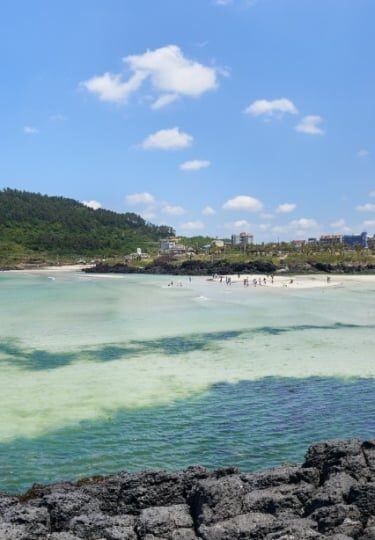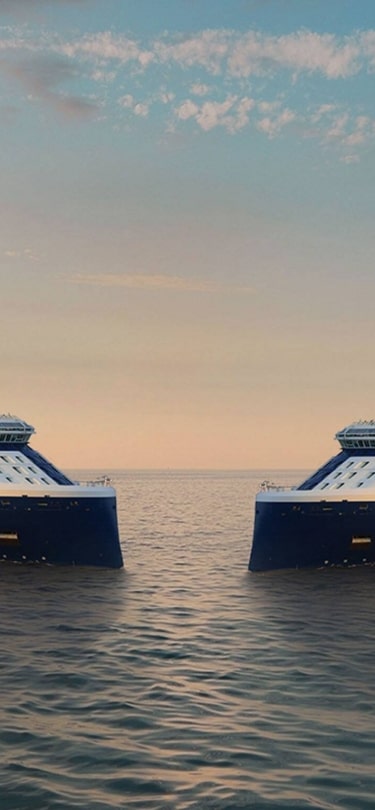The best time to visit Jeju Island is the spring, March to May, and the fall, particularly October and November. Temperatures are generally perfect for sightseeing and enjoying the scenery during these periods, and the island is at its most beautiful, too. Spring brings cherry blossom and bright yellow canola, while in fall, the leaves on the trees are a blaze of color.
Jeju Island lies off the southern tip of South Korea and has a temperate humid climate, with four distinct seasons. Summers—June, July, and August—are often hot and humid, while winters, from November to February, are cold.
However, you’ll find things to do here year-round. Hike up Mount Hallasan, South Korea’s tallest peak, or the volcanic cone Seongsan Ilchulbong, explore temples and museums, or marvel at the astonishing feats of the haenyeo, free-diving women who harvest abalone and oysters by hand.
Visiting Jeju Island by Season
Summer
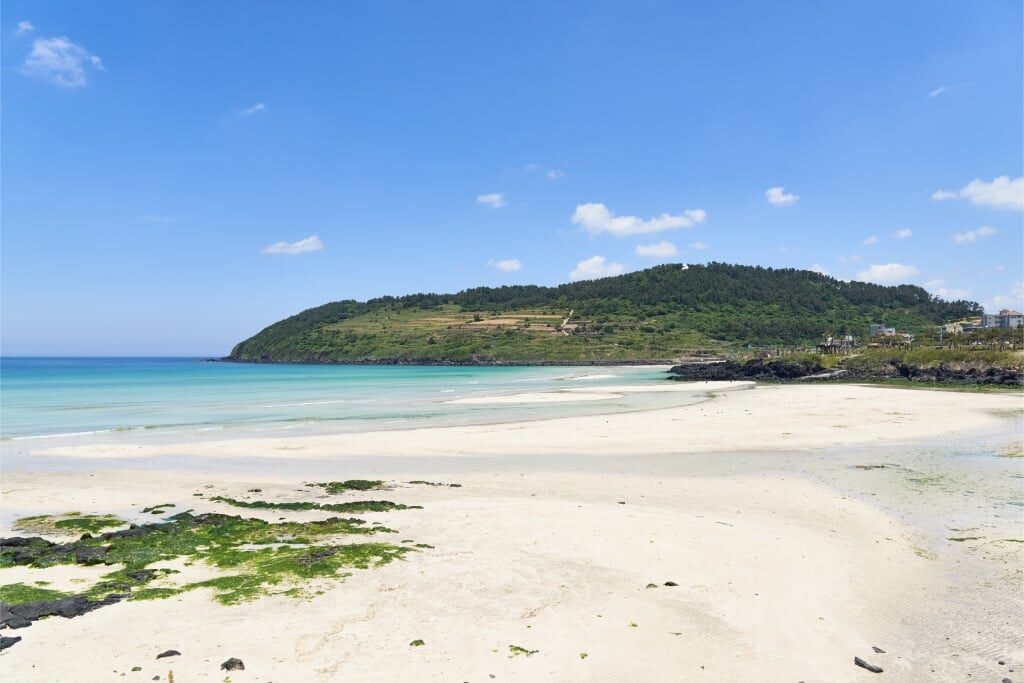
Hamdeok Beach
June, July, and August are hot and humid on Jeju Island—but as this period coincides with the main summer holidays in South Korea, it’s peak season here. The beaches will be busy as vacationers enjoy warm days, swimming, and surfing.
Summer is also the rainy season on Jeju. Expect average daily temperatures of 81.3°F (27.4°C) in August, the hottest month, and with it, 10.6 inches (270mm) of rain on average.
Rain tends to be concentrated over a period of a couple of weeks when the monsoon comes. Otherwise, summer is bright and sunny. August brings a decent 6.5 hours of sunshine daily, and the sea is a balmy 80.6°F (27°C), making for the perfect beach vacation.
Fall
Fall season in Jeju Island is mild and usually pleasant with low rainfall. Hot, humid summer days have given way to cooler weather, and the trees are turning brilliant shades of yellow and red. The weather is ideal for hiking and outdoor activities, along with many other exciting things to do.
September is still relatively hot, with average temperatures of 74.3°F (23.5°), but October is perfect for those who don’t like humidity, with daily averages of 65.4°F (18.6°C). Rainfall drops dramatically, from 9 inches (230mm) in September to 2.7 inches (70mm) in November. By now, the trees are at their most spectacular.
Winter
Jeju may have summers that feel tropical, but winters can be cold. Although temperatures rarely drop below freezing at sea level, precipitation falls as snow at higher levels, and it’s not unusual to see Mount Hallasan sporting a dense white cap. This winter wonderland is especially popular among hikers.
January is the coldest month, with a daily average of 43.1°F (6.2°C) and low rainfall—just 2.7 inches (70mm). December and February have even less rain, just 2.1 inches (55mm) on average each, although the days are short, with only 2.5 hours of sunshine.
Spring
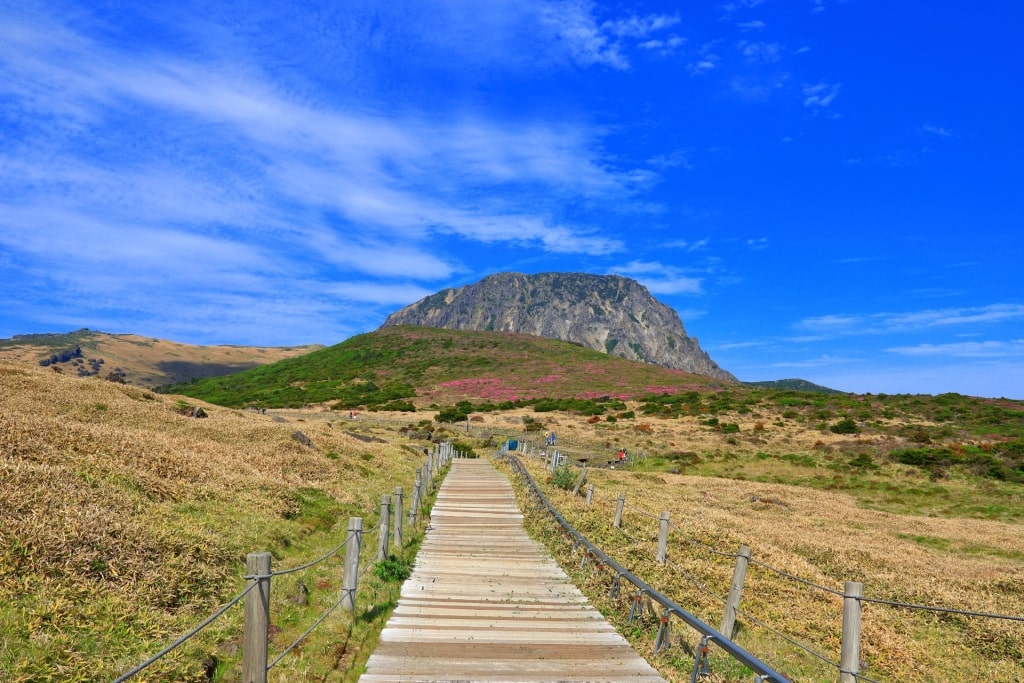
Hallasan Mountain
March, April, and May is actually shoulder season in terms of visitor numbers—but it’s one of the best times to visit Jeju Island. Temperatures are mild, and the weather is usually ideal for hiking. Trees and flowers are blooming, and you’ll see bright yellow canola flowers all over the island. Waterfalls are in full flow as the snows on Mount Hallasan melt.
March is still cool and relatively dry, but by May, the mercury has climbed to a daily average of 65.4°F (18.6°C). With just 3.5 inches (90mm) of rainfall on average, May is possibly the best month to go to Jeju Island.
When Is Rainy Season?
Rainy season on Jeju Island is the months of May to September, when tropical weather systems pass through. Rainy season is also the high season here, as it coincides with Korean summer holidays.
Rainy season doesn’t mean endless days of gray skies; summers here are bright and sunny, but humid. One exception when it comes to sunshine is Mount Hallasan, which receives a great deal more rain than the coast; at the peak of the rainy season in August, an impressive 32.8 inches (835mm) of rain can fall.
When Is High Season?
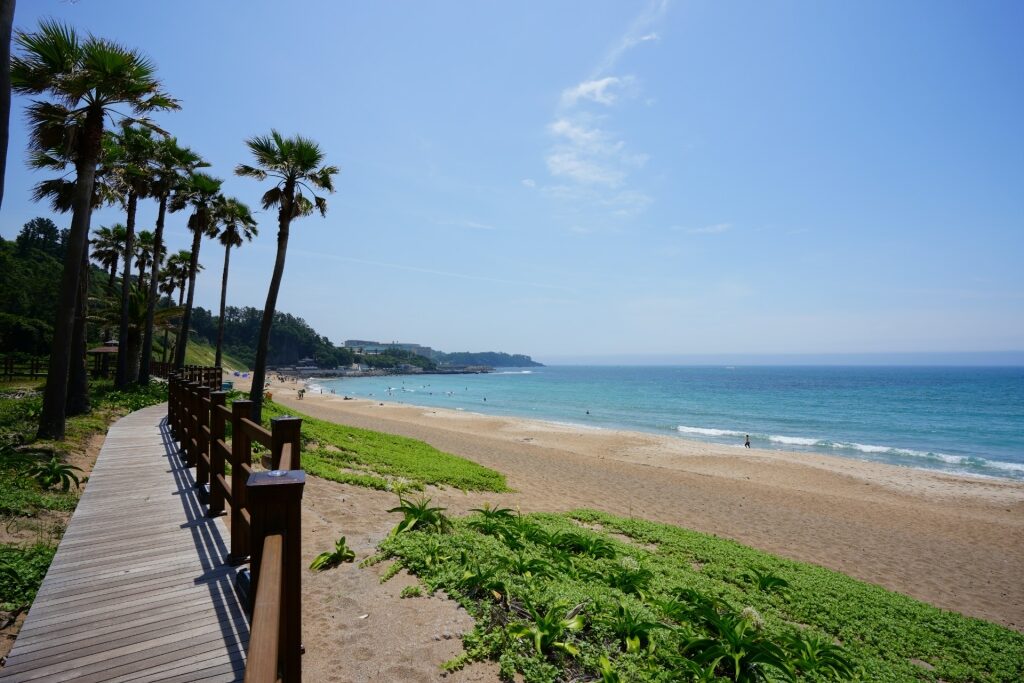
Jungmun Saekdal Beach
High season on Jeju Island is the summer months, July and August, when the weather is hot and humid, the sea blissfully balmy, and the beaches busy. Jeju has a wide variety of beaches, from calm, family-friendly stretches to the big waves of Jungmun Saekdal Beach, popular with surfers.
When Is Shoulder Season?
Spring and fall are shoulder seasons on Jeju Island, both absolutely beautiful times to visit. Come in spring for the cherry and canola blossoms or in fall for the dazzling colors and the clear light. In fall, the island’s meadows are covered in highly photogenic fluffy, silvery grasses, while November brings the tangerine harvest, the trees laden with bright orange fruit.
When Is Low Season?
Low season on Jeju Island is the winter months, when days are cool and nighttime temperatures drop toward freezing. Snow falls on high ground, and the beaches are quiet.
Winter does, however, attract hikers. Lunar New Year is also a big festival here, with visitors coming from the mainland for a festive break.
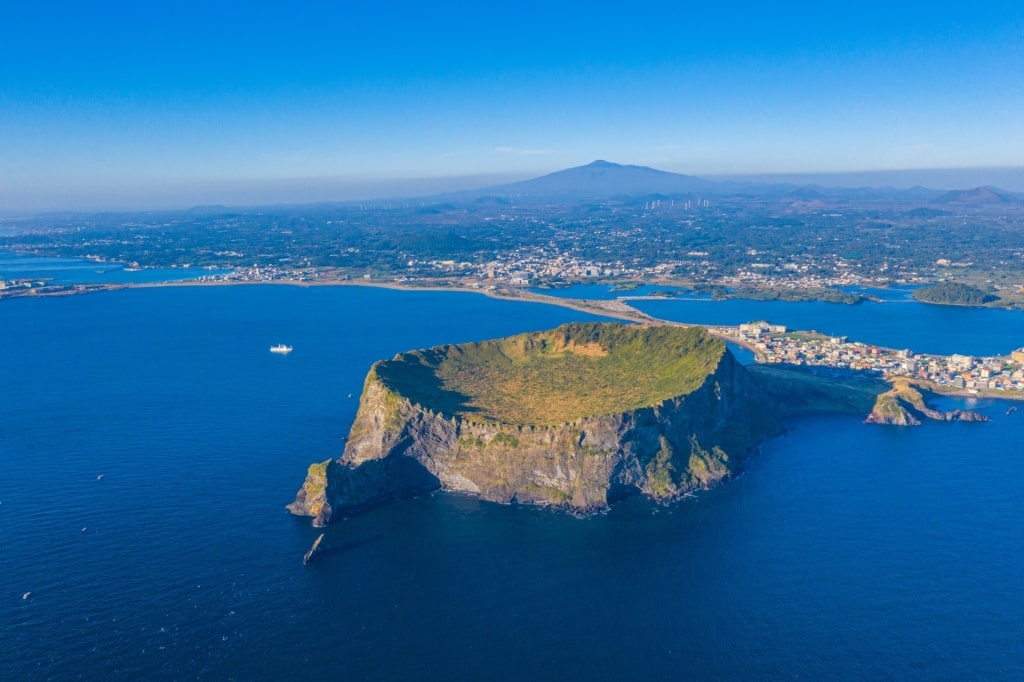
Jeju Island
Discover this beautiful island for yourself. Browse Celebrity’s cruises to Jeju Island and plan your next adventure.
